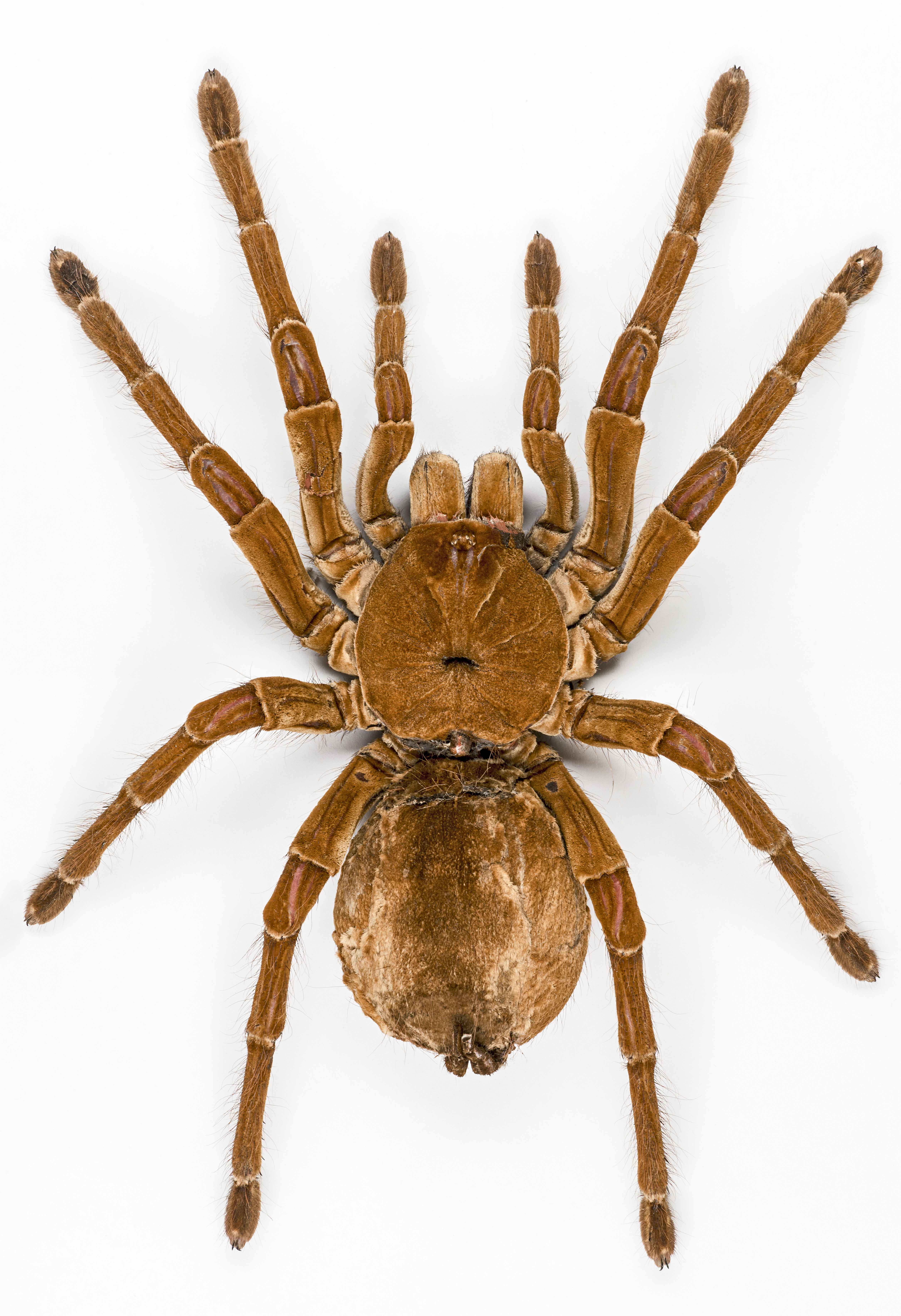Post by velesoid on Mar 27, 2020 17:21:26 GMT 5
The Goliath birdeater (Theraphosa blondi) belongs to the tarantula family Theraphosidae. Found in northern South America, it is the largest spider in the world by mass (175g) and size (30+ cm), but it is second to the giant huntsman spider by leg span. It is also called the Goliath bird-eating spider; the practice of calling theraphosids "bird-eating" derives from an early 18th-century copper engraving by Maria Sibylla Merian that shows one eating a hummingbird. Despite the spider's name, it only rarely preys on birds.
Despite its name, the Goliath birdeater only rarely actually preys on birds; in the wild, its diet consists primarily of other large arthropods, worms, and amphibians.However, because of its size and opportunistic predatory behavior, this species commonly kills and consumes a variety of insects and small terrestrial vertebrates. They do no onsume their prey "in public" rather, they drag it back to their burrow and begin the digesting process. They do this by liquifying the insides of their prey and proceed to suck it dry. In the wild, T. blondi has been observed feeding on rodents, frogs, toads, lizards, and even snakes.

commons.wikimedia.org/wiki/User:Archaeodontosaurus
vs
Scolopendra gigantea, also known as the Peruvian giant yellow-leg centipede or Amazonian giant centipede, is one of the largest centipedes of the genus Scolopendra with a length up to 40 centimetres (12 in). This species is found in various places in South America and the Caribbean, where it preys on a wide variety of animals, including other sizable arthropods, amphibians, mammals and reptiles.
It is a carnivore that feeds on any other animal it can overpower and kill. It is capable of overpowering not only other invertebrates such as large insects, spiders, millipedes, scorpions, and even tarantulas, but also small vertebrates including small lizards, frogs (up to 95 mm long), snakes (up to 25 cm long), sparrow-sized birds, mice, and bats.Large individuals of S. gigantea have been known to employ unique strategies to catch bats in which they climb cave ceilings and hold or manipulate their heavier prey with only a few legs attached to the ceiling.
At least one human death has been attributed to the venom. In 2014, a four-year-old child in Venezuela died after being bitten by a giant centipede which was hidden inside an open soda can. Researchers at Universidad de Oriente later confirmed the specimen to be S. gigantea.

(Bernard DUPONT from FRANCE)
Despite its name, the Goliath birdeater only rarely actually preys on birds; in the wild, its diet consists primarily of other large arthropods, worms, and amphibians.However, because of its size and opportunistic predatory behavior, this species commonly kills and consumes a variety of insects and small terrestrial vertebrates. They do no onsume their prey "in public" rather, they drag it back to their burrow and begin the digesting process. They do this by liquifying the insides of their prey and proceed to suck it dry. In the wild, T. blondi has been observed feeding on rodents, frogs, toads, lizards, and even snakes.

commons.wikimedia.org/wiki/User:Archaeodontosaurus
vs
Scolopendra gigantea, also known as the Peruvian giant yellow-leg centipede or Amazonian giant centipede, is one of the largest centipedes of the genus Scolopendra with a length up to 40 centimetres (12 in). This species is found in various places in South America and the Caribbean, where it preys on a wide variety of animals, including other sizable arthropods, amphibians, mammals and reptiles.
It is a carnivore that feeds on any other animal it can overpower and kill. It is capable of overpowering not only other invertebrates such as large insects, spiders, millipedes, scorpions, and even tarantulas, but also small vertebrates including small lizards, frogs (up to 95 mm long), snakes (up to 25 cm long), sparrow-sized birds, mice, and bats.Large individuals of S. gigantea have been known to employ unique strategies to catch bats in which they climb cave ceilings and hold or manipulate their heavier prey with only a few legs attached to the ceiling.
At least one human death has been attributed to the venom. In 2014, a four-year-old child in Venezuela died after being bitten by a giant centipede which was hidden inside an open soda can. Researchers at Universidad de Oriente later confirmed the specimen to be S. gigantea.

(Bernard DUPONT from FRANCE)




